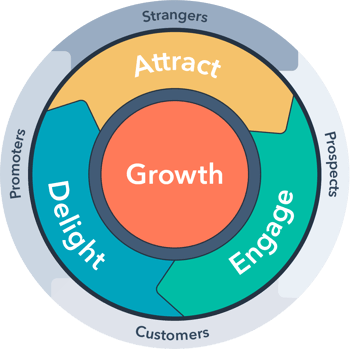
Cutting-Edge Marketing to Grow Your Business.
 Inbound marketing–a marketing strategy focused on providing valuable content and information to potential customers, drawing them to your business, rather than a marketing strategy advertising outwards–is an immensely effective marketing strategy. That’s why it’s essential for all businesses, but especially small businesses, to utilize inbound marketing in their advertising campaigns.
Inbound marketing–a marketing strategy focused on providing valuable content and information to potential customers, drawing them to your business, rather than a marketing strategy advertising outwards–is an immensely effective marketing strategy. That’s why it’s essential for all businesses, but especially small businesses, to utilize inbound marketing in their advertising campaigns.
However, inbound marketing is not something you should just jump into. It requires careful research and insight in order to successfully resonate with your target audience and keep them continuously engaged with your brand. Keep reading to determine how to plan an inbound marketing strategy, and why it’s so crucial to spend time properly developing your strategies!
 What is the flywheel in an inbound marketing strategy
What is the flywheel in an inbound marketing strategyThe flywheel is a marketing model that self-sustains customer interaction in order to achieve more growth. Leads begin as strangers, who are then attracted to your business by either word-of-mouth or direct promotion. Once they’ve arrived, they engage with content and can convert into prospects. After enough engagement, the prospects can then convert into customers.
But that’s not all.
In order to keep customers loyal to your brand and proud to partner with your business, you’ll need to constantly delight them with valuable content, useful products or services, and excellent customer service, among other factors. Once you get the flywheel moving, it should keep spinning, providing your company with dedicated customers and a high rate of conversion, from strangers to sales.
The flywheel model breaks free from the traditional sales funnel marketing model and prioritizes continuous growth and engagement over a general purchase. The three stages of the buying process –attracting, engaging, and delighting– all work together to sustain marketing momentum and keep customers interacting with your business.
In order to successfully switch over from a sales funnel model to a flywheel model, businesses should start by:
As an essential aspect of an inbound marketing strategy, the flywheel model is an alternative to the more traditional sales funnel framework commonly used in marketing. While the sales funnel model focuses primarily on the outcome, the flywheel model used in inbound marketing strategies pays more attention to the customer experience.
By continuously attracting, engaging, and delighting viewers, marketing momentum is sustained and keeps generating leads and genuine interaction. By using a flywheel model instead of a simple sales funnel model to form your inbound marketing strategy, you can develop more effective marketing tactics that lead to more success for your company, especially by focusing on inbound content that provides value to prospective customers and draws them to your business.
When it comes to effective inbound marketing, the most important factor that contributes to success is carefully researching what topics and content would resonate best with your target market. This requires deep thought and in-depth planning. Without careful preparation and a well-planned inbound marketing strategy, your flywheel won’t keep spinning on its own–in fact, customers might not even be attracted to your marketing in the first place! In order to truly benefit from inbound marketing and the flywheel framework, determining precisely what things attract, engage, and delight your potential clients is key!
Therefore, don’t implement your advertising campaign until every detail of your inbound marketing strategy has been researched and finalized.
Planning an inbound marketing strategy takes quite a bit of research and effort, but the rewards are more than worth it. Developing an inbound marketing strategy based on the flywheel framework, and utilizing the core values of attracting, engaging, and delighting customers, can lead to huge success for your business if done correctly. By planning your inbound marketing strategy ahead of time–rather than jumping right into advertising–you can easily build a self-sustaining marketing model that pays off big in the long run.
Get our Inbound Marketing Cheat Sheet and learn how to get your inbound marketing program started.



Lorem Ipsum is a simple dummy text used as a dummy text contents. Lorem ipsum will be replaced. Lorem Ipsum is a simple dummy text used as a dummy text contents. Lorem ipsum will be replaced.Lorem Ipsum is a simple dummy text used as a dummy text contents. Lorem ipsum will be replaced.




